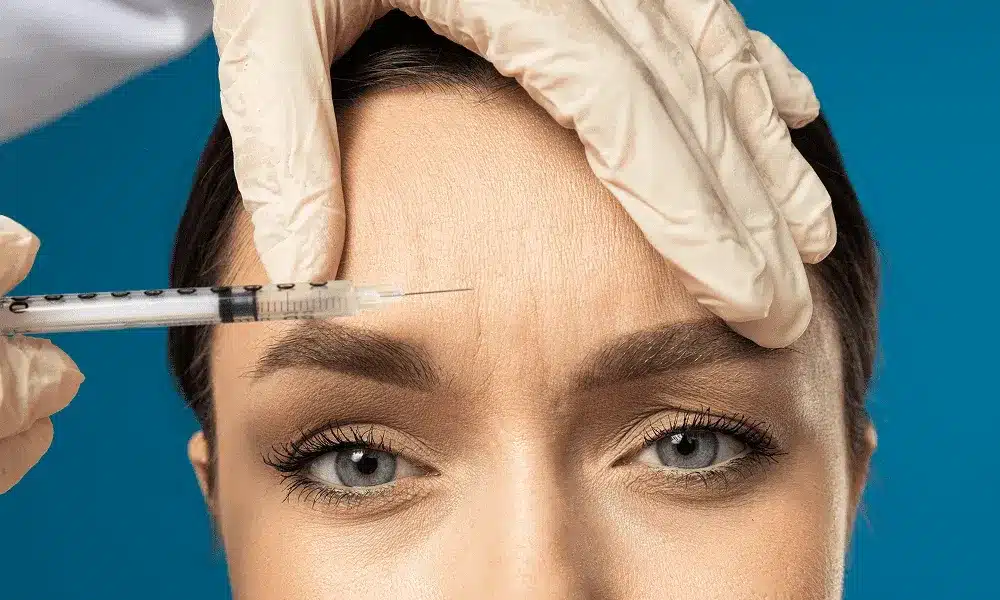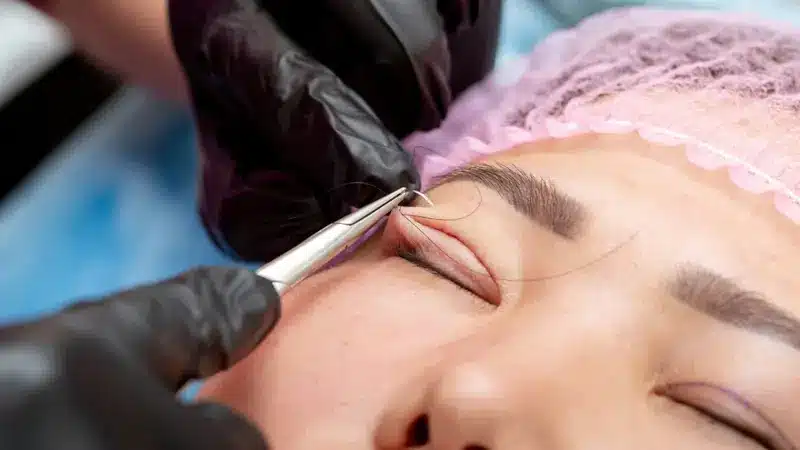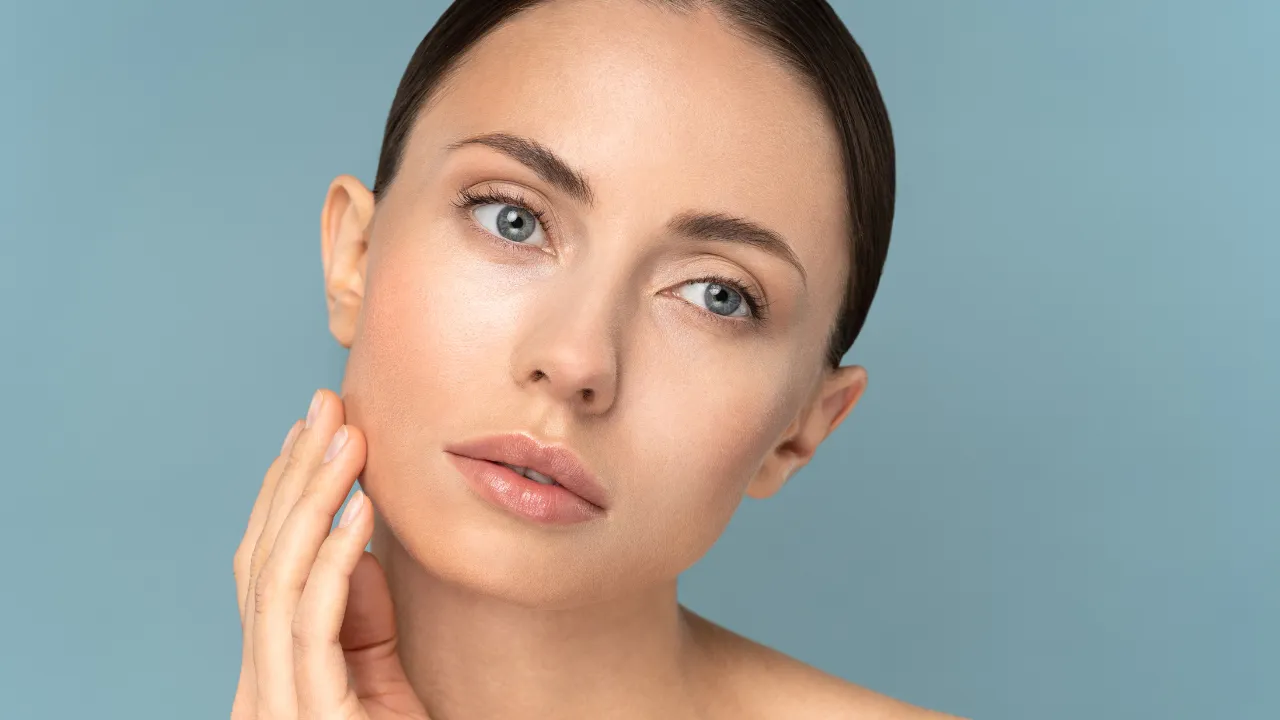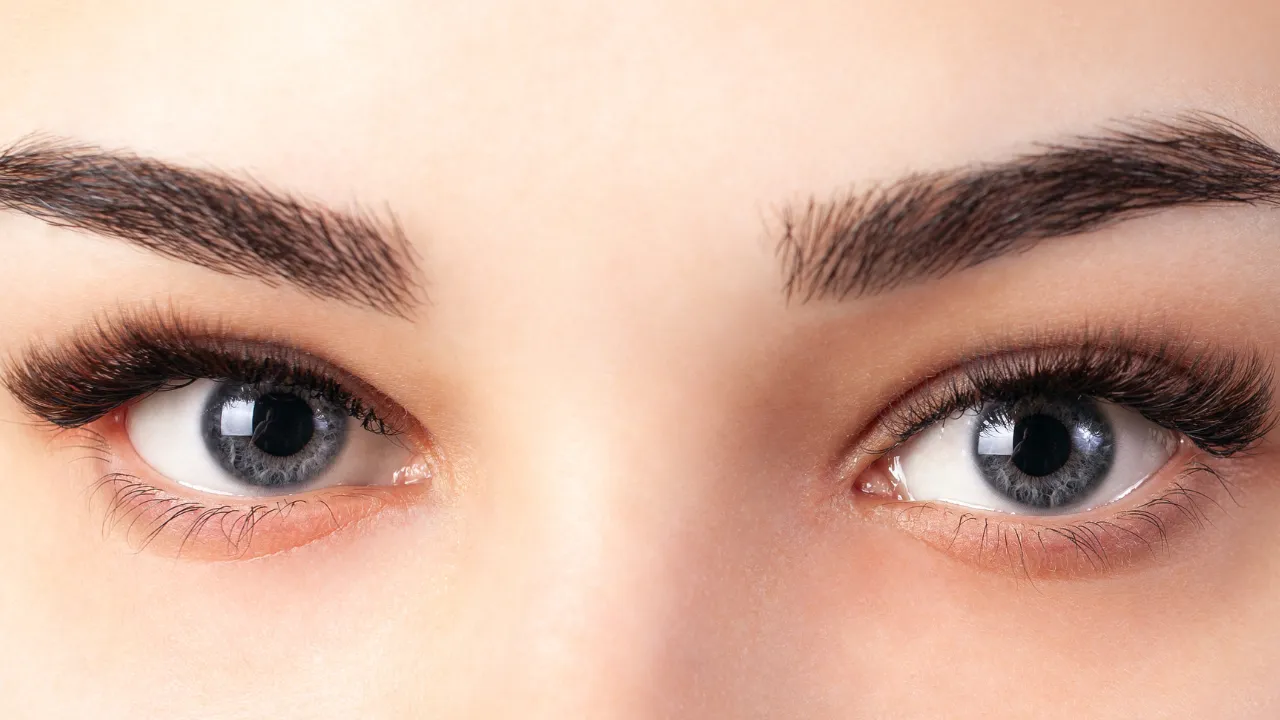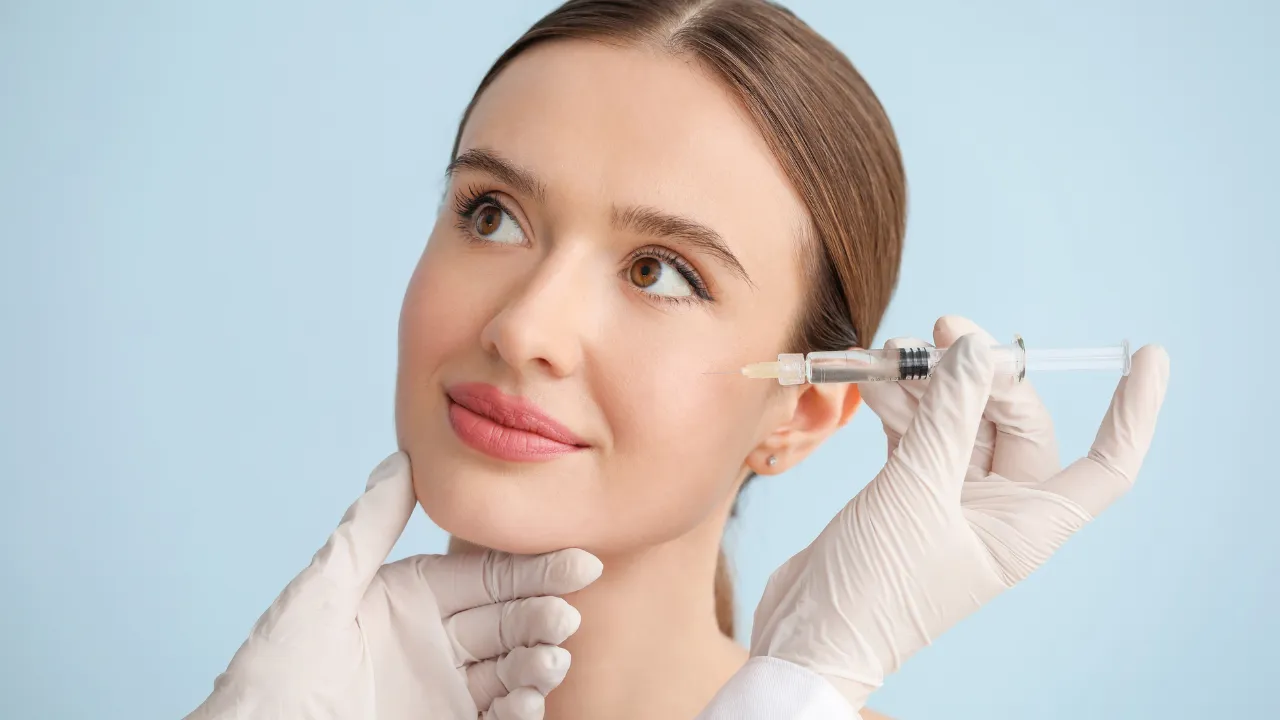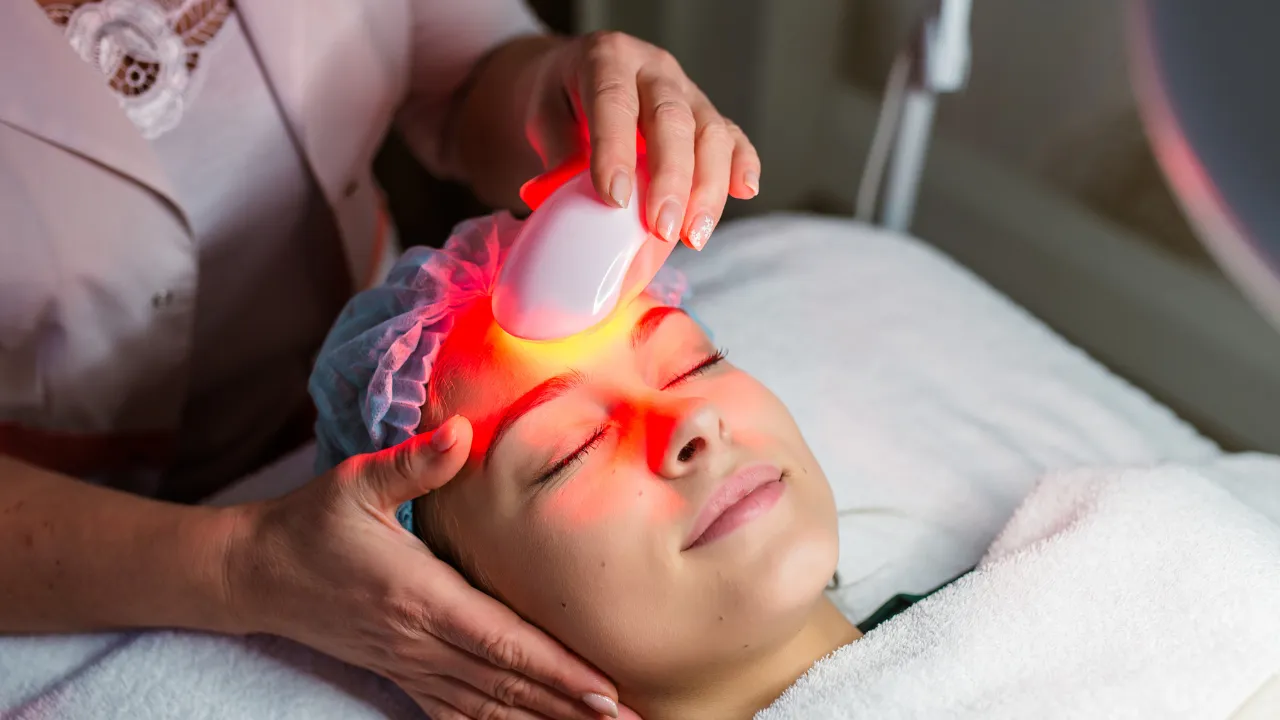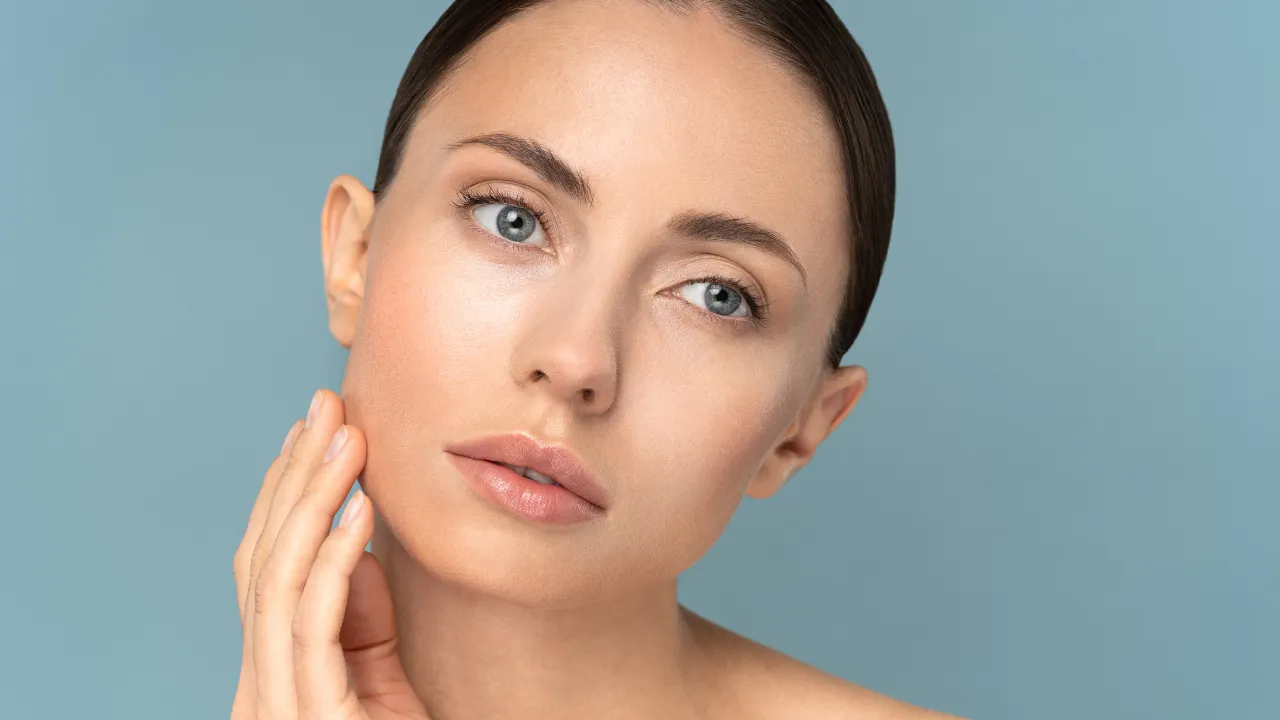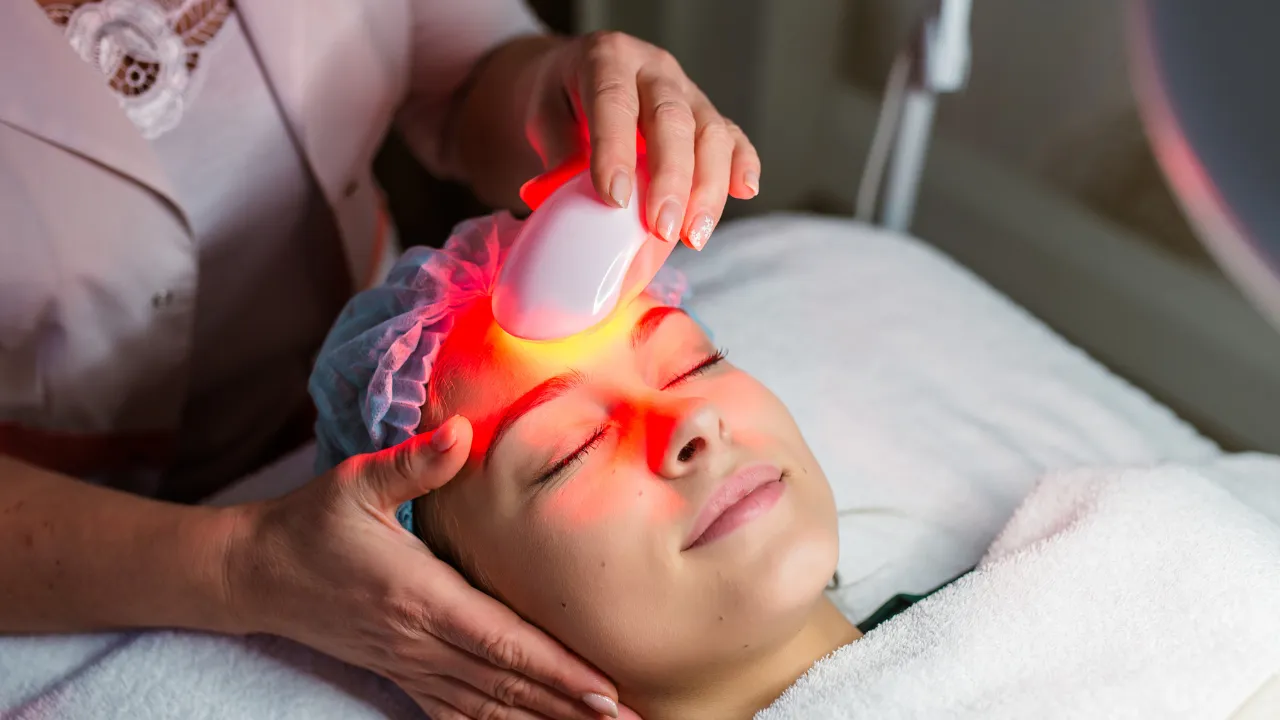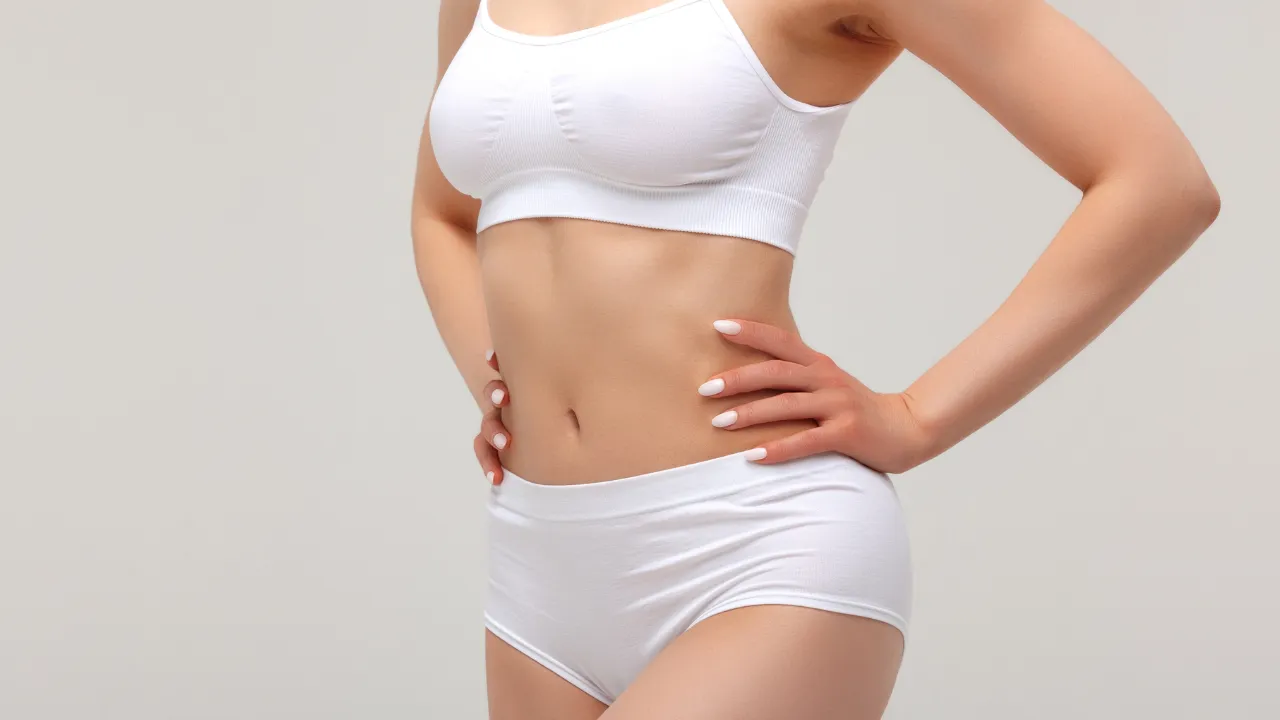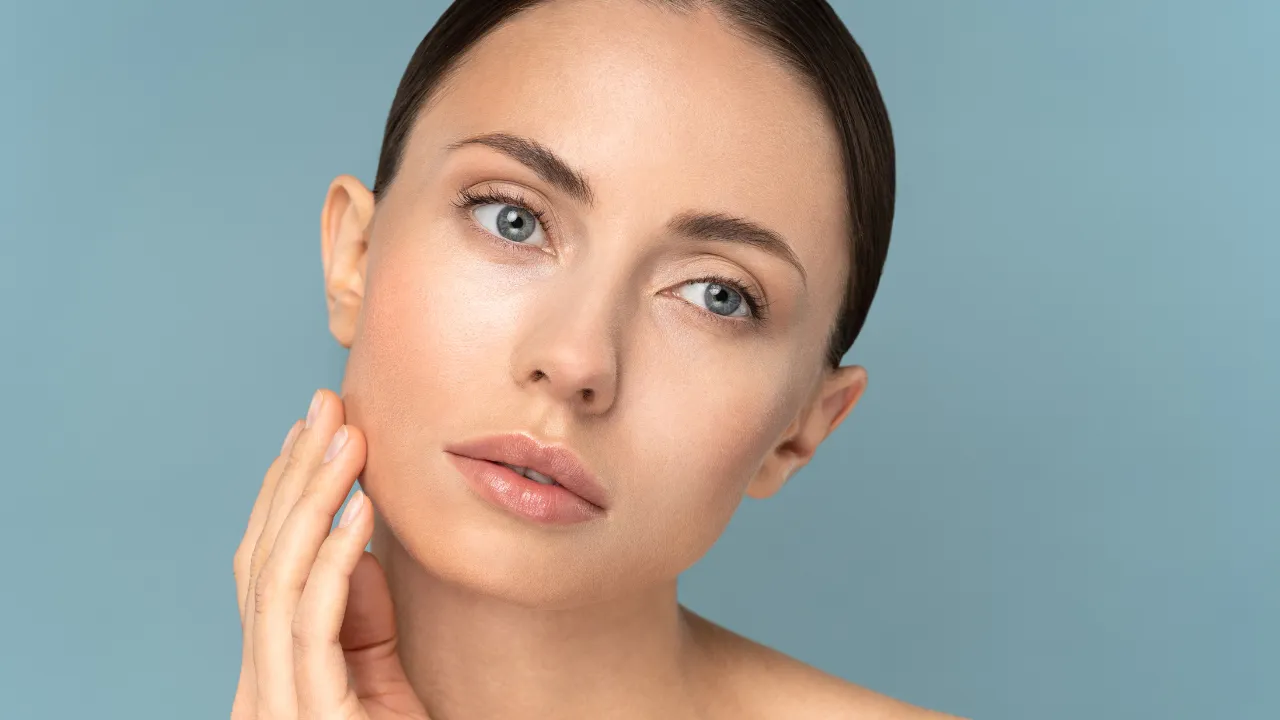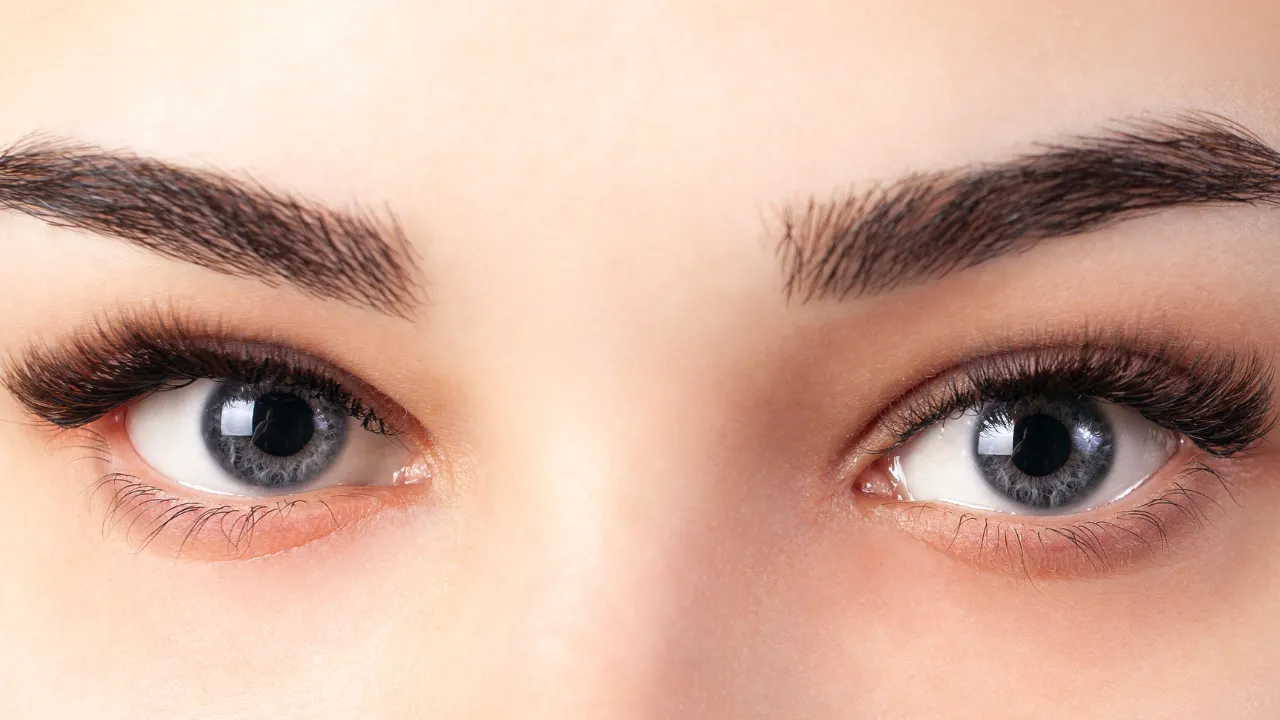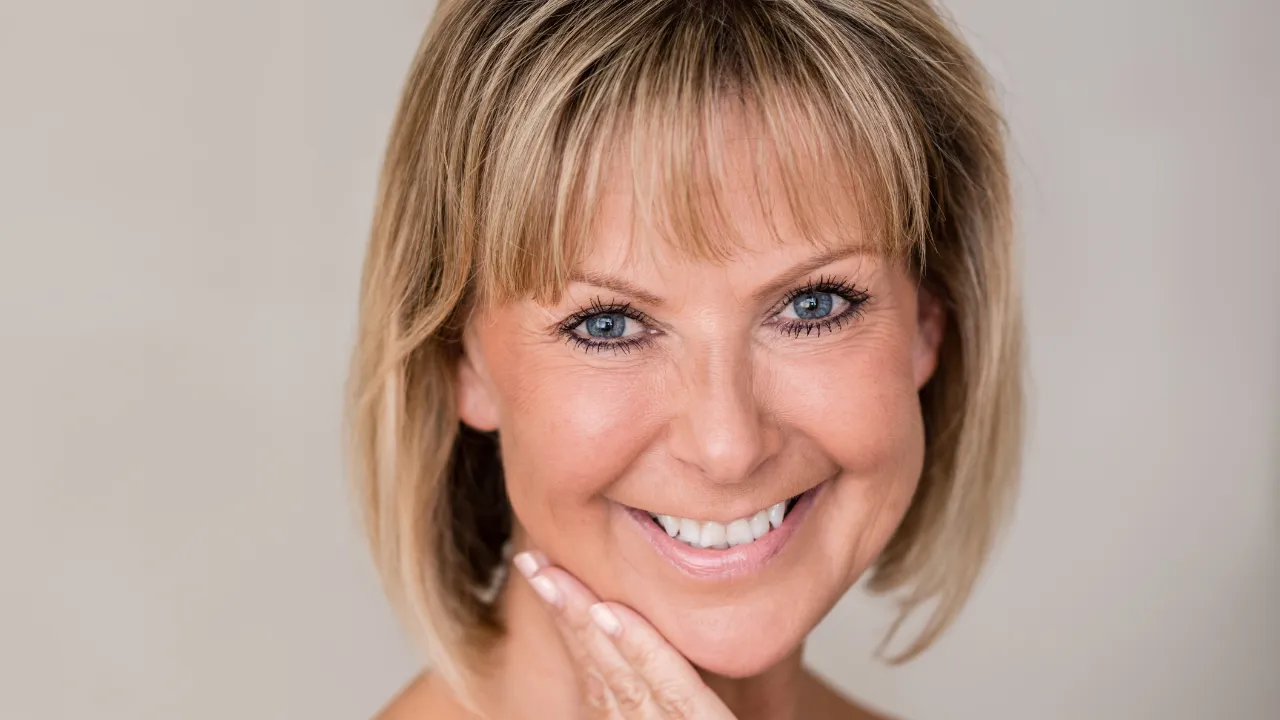At Kopelman Aesthetic Surgery in New York City, patients often ask about the best makeup after blepharoplasty. The short answer is: wait until healing is sufficient, choose gentle products, and follow strict hygiene.
Dr. Joel Kopelman, a board-certified plastic surgeon specializing in facial plastic surgery and oculoplastic procedures, explains that patients can usually start wearing makeup about 10 to 14 days after blepharoplasty surgery, but only once the surgeon confirms it is safe.
This guide provides eye makeup tips after eyelid surgery, including timelines, product selection, and safe application methods.
Key Takeaways
- Most patients can safely start wearing makeup 10 to 14 days after blepharoplasty, but only after surgeon clearance.
- Safe products include hypoallergenic, fragrance-free, water-based cosmetics and mineral-based products, while alcohol based or glitter makeup should be avoided.
- Applying makeup too early increases the risk of infection, skin irritation, and delayed healing.
- Proper hygiene – including clean brushes, handwashing, and frequent product replacement – is essential when applying and removing makeup during recovery.
- Dr. Kopelman emphasizes that healing milestones, not the calendar alone, determine when it is safe to wear eye makeup again.
Table of Contents
ToggleGeneral Recovery Care Before Makeup
Before considering makeup, Dr. Kopelman advises focusing on recovery. Cold compresses reduce swelling, while prescribed ointments or drops prevent dryness. Sleeping with your head elevated also helps healing.
When Can You Safely Wear Makeup?
Most patients can start wearing makeup around 10 to 14 days after surgery, once swelling decreases and incisions close. Heavier products should wait until your surgeon confirms it is safe.
Surgeons like Dr. Kopelman stress that clearance is the most reliable sign that you can resume applying makeup. Every patient heals differently, so evaluation protects results.
Warning signs include redness, discharge, or swelling. Stop using products if these appear and contact your provider.
Applying makeup too soon may cause infection, irritation from alcohol based products, or scarring.
When Can I Wear Mascara After Blepharoplasty?
Mascara should be avoided until at least two weeks post-surgery, since flakes or applicators can irritate incisions.
When Can I Wear Makeup After Upper Blepharoplasty?
For upper blepharoplasty, wait until stitches are removed or dissolved.
When Can I Wear Makeup After Lower Blepharoplasty?
For lower blepharoplasty, avoid eyeliner or eye shadow on the lower lash line until fully healed.
Choosing the Right Makeup Products
The best and safest makeup after eyelid surgery is lightweight, hypoallergenic, and water-based cosmetics designed to be safe for sensitive skin. Cream concealers or mineral-based products are safer than heavy pressed powders.
Key points when choosing products:
- Look for hypoallergenic and fragrance-free formulas.
- Choose water-based cosmetics or mineral-based products over heavy powders.
- Select brands marketed as safe for sensitive skin.
- Avoid alcohol based products that dry and irritate healing tissue.
Recommended Eye Makeup Types
- Mineral-based concealer for under-eye coverage
- Neutral eye shadow without shimmer particles
- Lightweight brow gels
Products to Avoid
Avoid waterproof mascara, alcohol based eyeliner, and glitter shadows, as they are harder to remove and may cause skin irritation.
How to Hide Blepharoplasty Scars With Makeup
Use a gentle color-correcting concealer. Apply lightly with a clean brush, never directly on the incision.
How to Apply Eye Makeup After Blepharoplasty
Learning how to apply eye makeup after blepharoplasty requires patience. Start with small amounts and use tapping motions.
Hygiene and Safety Practices
Wash hands before application, sanitize brushes, and replace mascara regularly. These steps reduce bacteria transfer.
Dr. Kopelman reminds patients that even with quality products and safe techniques, clearance from your surgeon ensures the eyelids can tolerate makeup without risk.
Best Eye Makeup Remover Options
Choose oil-free, fragrance-free removers like micellar water or cleansing balms. These are safe for sensitive skin and remove product without harsh rubbing.
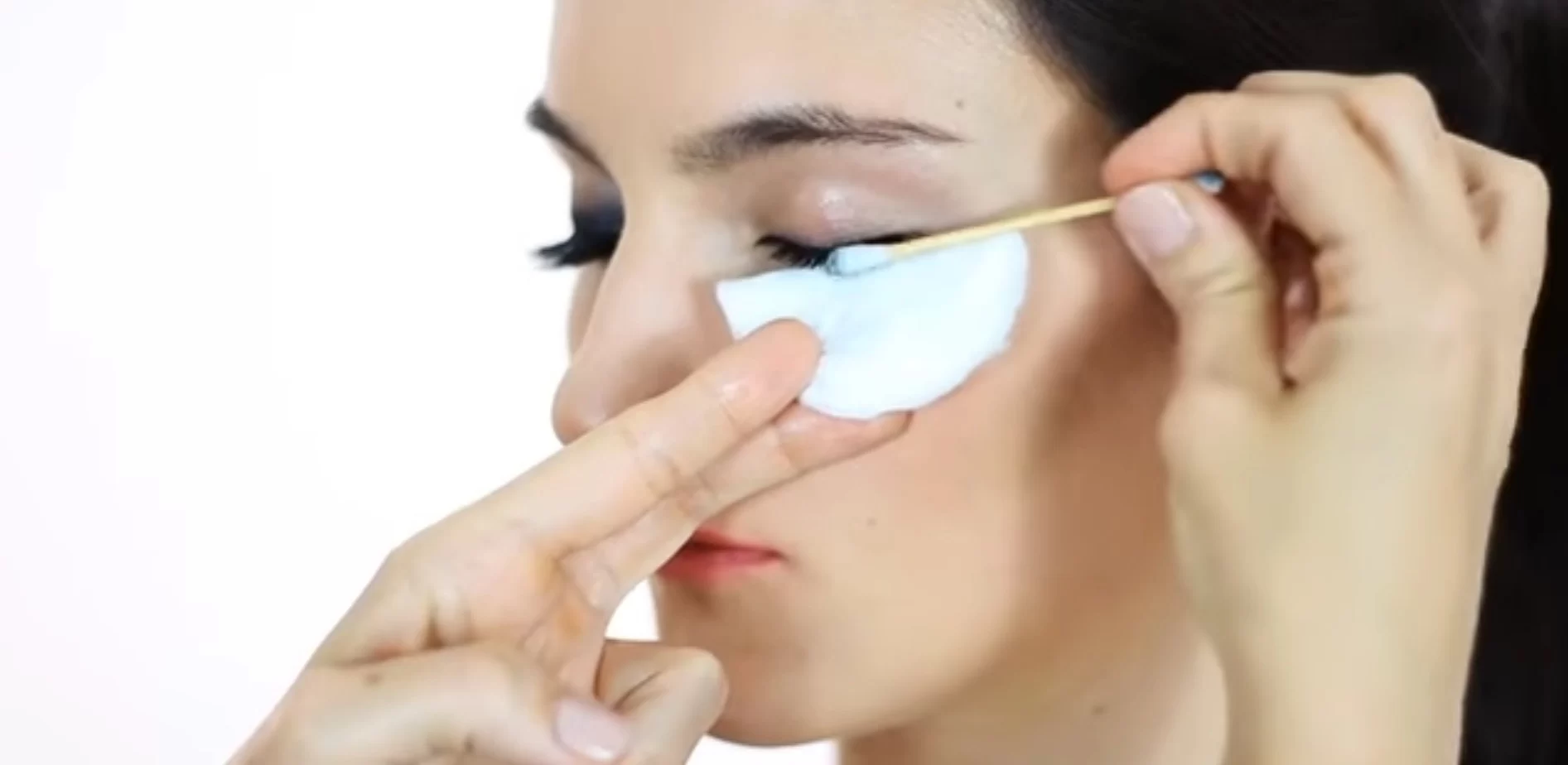
Ingredients to Avoid
Avoid alcohol based removers or harsh surfactants, as they can irritate healing tissue.
Maintaining Eye Health After Surgery
Light moisturizer around, but not on incisions, and sunglasses to block the sun help support results.
Risks of Using Makeup Too Early
Applying makeup too soon risks infection, scarring, or skin irritation. Always follow your surgeon’s timeline before resuming full routines.
Professional Consultation Benefits
Dr. Kopelman recommends follow-up visits to confirm when it is safe to wear eye makeup again. A quick check ensures patients can return to cosmetics while protecting results.
Patients at Kopelman Aesthetic Surgery trust Dr. Kopelman for expert guidance through recovery. With safe timelines, water-based cosmetics, and quality products, you can return to makeup while protecting your results.
Schedule a consultation with Dr. Kopelman today to receive personalized advice and a recovery plan tailored to your needs.


